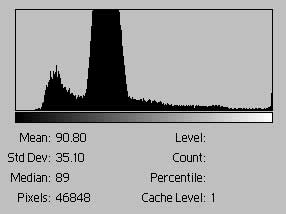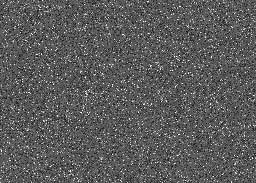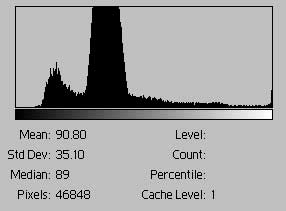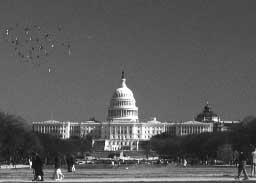|
Contents Understanding Image Histograms and Curves Histograms Histograms and Pixel Structure Using Histograms as a Scanner Tool Image Exposure and Tone Curves Changing Brightness and Contrast Interactive Demos Appendices The Photoshop Levels Function and Curves |
Keep in mind that a histogram simply gives a summary of the image's tonal values. It tells us nothing about how the individual pixels are arranged.
To demonstrate this we'll contrive an image consisting of a visually continuous tonal gradient. A gradient has tones that are spatially related because the image elements are quantitatively ordered. That is similar tones are spatially contiguous.
 |
 |
fig. 6
To the right of fig. 6 is its histogram. In this image the tonal value of a pixel is absolutely correlated with its location. Given a location we can predict what the pixel will be.
Next, with some of the tools, we're going to push the pixels around randomly, making sure as we move each pixel that its tone is unchanged:
 |
 |
fig. 7
As you can see the histogram is exactly the same as the gradient histogram, but in fig. 7 the tonal value of a pixel is uncorrelated with its location.
Now, let's push the pixels around a bit more creatively:
 |
 |
fig. 8
Again the histogram is exactly the same. Here the tonal value of a pixel has some correlation with its location. Given a location we can predict with good probability what its value will be.
The three pictures have exactly the same pixels and as a result their histograms are exactly similar. How the pixels were arranged does not affect the histograms. As far as the histogram function is concerned, it's looking at the same picture in each of the three cases. Our visual sensibilities attach significance and order to an image.
A bar in an image histogram aggregates observations from the entire image